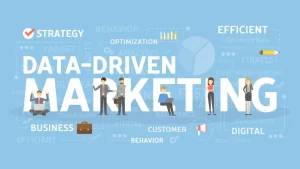
The Role of Storytelling in Branding: Creating Connections That Last
In a world saturated with advertisements and marketing messages, storytelling has emerged as a powerful tool for brands to cut through the noise. At its core, storytelling in branding is about more than selling products or services—it’s about creating an emotional connection with the audience. It transforms businesses from mere entities into relatable, memorable characters in the lives of their customers. Let’s explore why storytelling is so vital in branding and how it drives deeper engagement and loyalty.
What is Storytelling in Branding?
Storytelling in branding involves weaving narratives that communicate your brand’s purpose, values, and personality. Instead of relying on cold, hard facts or product features, storytelling uses emotions, characters, and experiences to make your brand more relatable and human. This approach isn’t limited to words; it can be expressed through visual imagery, videos, design elements, and even customer interactions.
Why Storytelling Matters in Branding
The power of storytelling lies in its ability to evoke emotions and create a lasting impression. Research shows that people are more likely to remember stories than standalone facts. This is because stories engage the brain’s emotional and cognitive centers simultaneously, making the experience both memorable and meaningful.
In branding, storytelling helps businesses:
- Build Emotional Connections:
Stories have the unique ability to evoke empathy and resonate with personal experiences. A customer who hears a story about how a sustainable clothing brand supports local artisans is more likely to feel emotionally invested in that brand. - Humanize the Brand:
Behind every successful brand is a journey filled with struggles, triumphs, and milestones. Sharing these moments makes your brand more relatable, transforming it from a faceless corporation into a trustworthy companion. - Differentiate in the Market:
Every brand has a product to sell, but not every brand has a compelling story. In competitive markets, a strong narrative can set your brand apart and give customers a reason to choose you over others. - Foster Loyalty and Advocacy:
When customers resonate with a brand’s story, they become loyal advocates, often sharing that story with others. This word-of-mouth marketing amplifies your reach and strengthens your community.
Key Elements of Effective Brand Storytelling
A compelling brand story typically includes a few essential elements. First, there must be a central character, which can be your brand, your customers, or the people impacted by your work. The story should also have a conflict or challenge that resonates with the audience—this creates tension and keeps them invested. Finally, a resolution or transformation shows how the brand played a role in overcoming the challenge, offering inspiration or a sense of fulfillment.
For example, Airbnb’s branding often focuses on the stories of travelers and hosts, highlighting their unique experiences and connections. By centering its narrative on people rather than just accommodation, Airbnb creates a sense of belonging and community that extends far beyond booking a room.
Storytelling is the lifeblood of successful branding. It gives a brand depth, character, and purpose, making it more than just a business in the eyes of its audience. By crafting authentic, relatable narratives, brands can build lasting relationships, foster loyalty, and differentiate themselves in an increasingly crowded market. In the end, the most successful brands are not just the ones with the best products, but the ones with the best stories—stories that inspire, engage, and leave a lasting impact.




